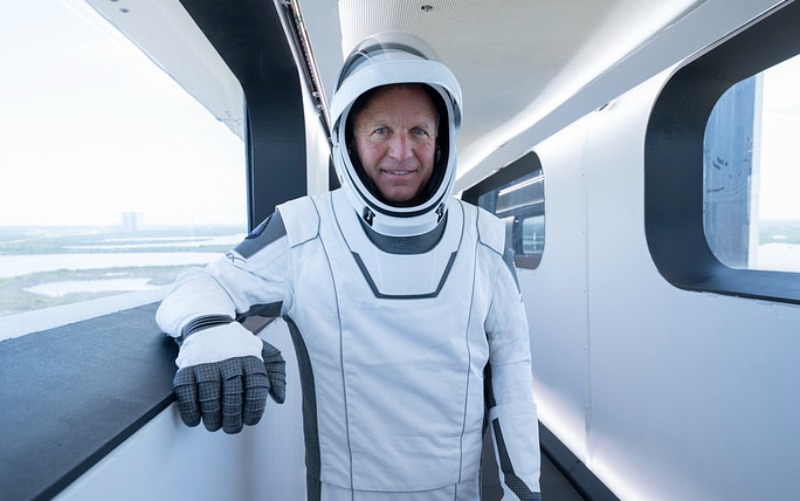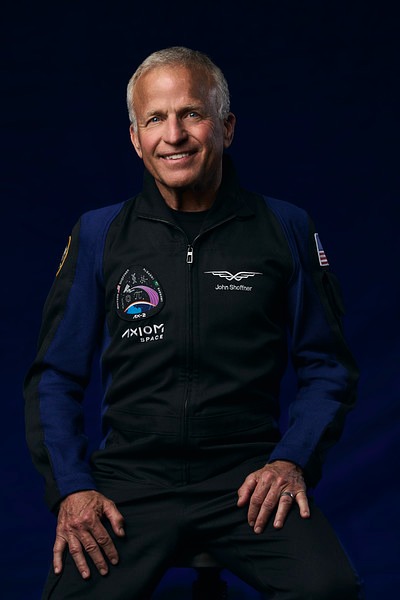
The series Habitat Space, featuring John Shoffner and special guest Commander Peggy Whitson, is now available for teachers and students free around the globe.
Shoffner provides a behind-the-scenes look at life on the ISS, a large spacecraft that continuously orbits around Earth. Shoffner uses his quick wit and humor to pull students in and encourage them to grow their love for STEM. The short series is intended for classroom use and provides a unique perspective of living in space, with topics including conservation of momentum, surface tension, amateur radio in space, water recovery system on the International Space Station (ISS), science on the ISS, space toilet, and more.
STEM Today: Can you tell us about your experience as the Pilot on the Axiom Space Ax-2 mission to the International Space Station (ISS)? What were some of the most memorable moments?
John Shoffner: Some of the most memorable moments came from the unexpected and often untrainable events, such as the first feeling of ignition at T-0 when we first feel the Falcon 9 rumble to life. And the feeling when the Falcon 9 booster rotates after clearing the Earth’s atmosphere and begins its massive acceleration to catch up to the ISS at 17,500 mph, 4.7 g’s has never felt so good. And the bang of the explosive bolts that kick the Dragon off into orbit. Like a shotgun followed by the pure silence of space and no gravity, we are floating and have arrived. And then the feeling of when the Dragon docks to the ISS. A contact so soft, but it tells you the next part of the adventure is about to begin.
And finally, that moment that all first flying astronauts wait for, their first visit to the Cupola on the ISS, that marvelous windowed room, and a full view of our magnificent planet Earth below. It truly takes your breath, and you’re powerless to look away or speak. Time stops. The list goes on and on- making new friends in space, eating meals together at 17,000mph, singing songs, and chasing the daily schedule of fast-paced work on the ISS. All were wondrous moments that I will carry with me forever.
ST: Commander Peggy Whitson was your colleague on the ISS. Can you share what it was like working with her?
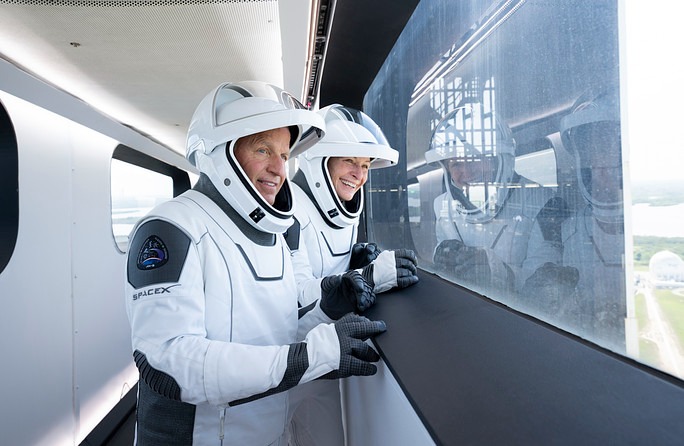
Shoffner: To have the chance to serve on this mission with Commander Whitson was incredible. She is a legendary astronaut and commander and a marvelous human being. The experience with Peggy was extremely rich in learning. She taught me how to accept the role of an astronaut and what was needed to perform alongside the NASA crew on the ISS. She taught me so many things about discipline and performance. We had a sort of unspoken motto: “Excellence was where we start our day. We improve from there.” We had a ton of fun as a crew, and it was because Peggy brought us all together as individuals and believed in us.
ST: You mentioned that “Habitat Space” is available for free to teachers and students worldwide. How do you envision this series benefiting students and educators?
Shoffner: Habitat Space was developed to be used by teachers to do at least three things: (1) Capture the student’s attention by showing them something novel and hopefully with a bit of humor, (2) create a comparison between life in space and everyday life on Earth, and (3) provide a conversation to teach around. There are multiple opportunities to incorporate each episode into a teacher’s lesson plan. There are many possibilities for teachers to use the material and visuals incorporated into the STEAM curriculum to demonstrate engineering, problem-solving, math, and all the dynamics of the science of being in microgravity.
ST: You’ve become the 598th person of record to orbit the Earth. What does it feel like to be part of this exclusive group of space explorers?
Shoffner: It took just a little while to understand the importance of being in such an exclusive group. I have come to realize that it brings with it an obligation to share the experience. One that I am happy to do. One bit of observation: Whenever I would meet someone for the first time since my return, most people would greet me with “Welcome back to Earth.” That did not register with me at first. It seemed an odd thing to say. For me, it had become an obvious result – I trained, flew, and returned. But to others, their only perception was that I went into orbit and left the Earth.
They greeted me in the only way they could consider, just as when you travel and visit relatives, they welcome you back home. Soon, many more people will be routinely coming and going to space and eventually even living off the planet for extended periods. When they return, this will be how they are welcomed home: “Welcome back to Earth.” I have simply experienced the greeting of the future. It made me smile at the thought.
It is truly a marvelous planet on which we live, and we must certainly do all we can to honor and protect it. We also have an obligation to learn more about ourselves and how to grow as a species. My time in space has provided me with some precious information that I must share in a way that encourages growth and exploration. I see today’s young students as the key, so that is where I will start. And when someone welcomes me back to Earth, I usually say, “Thank you, it’s nice to be home.”
ST: In your videos, you encourage students to experience space for themselves. What advice do you have for young people who aspire to follow in your footsteps and pursue a career in space exploration?
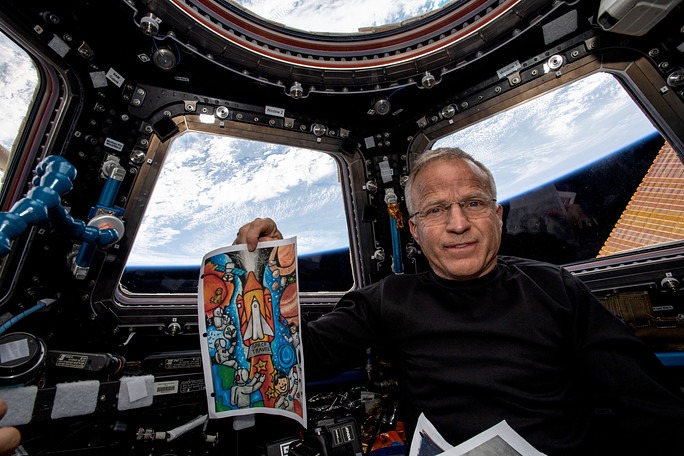
Shoffner: Every child has a vision of themselves; they just sometimes need help to believe that it is real and help them to see themselves in that role. Following in my footsteps would mean developing the courage and conviction to aggressively seek what is most important to you as a person, to become an active learner, and to use failure as a tool to learn and always move along a path toward your goal. Whatever it is. Certainly careers in space, in any form, are exciting, and the coming access to space and space exploration will bring many new opportunities. But remember that for humans to succeed in space long term will require support from a long, long list of possible life choices. There is room for everybody’s voice and vision. I like to think that we are happiest when we do what we love, and happy people do great things. And great things are what we will need to succeed.
ST: What do you believe is the most significant impact that STEM education can have on society, and how can series like “Habitat Space” contribute to this impact?
Shoffner: STEAM education is about learning the tools of creative problem-solving. The most significant impact to any student exposed to STEM learning is in developing basic problem-solving skills. Creating a new awareness in a young person that problems are made of multiple smaller problems is a huge win. Teaching how to build a path toward a final solution by solving for the separate elements applies to all areas of life. Life presents various problems every day.
When we teach our students how to break problems down into smaller parts and create life problem-solving skills, they become more confident in all areas. Habitat Space was designed to have a role in the classroom to encourage students to raise their hand in the conversation of life in space and discuss the differences, the problems, and the solutions we must solve as we proceed to create new worlds beyond.
ST: What advice or guidance do you have for educators?
Shoffner: I am confident that almost all students already know what area of life excites them. It might be space, but it could also be animals, plants, insects, or about anything. I hope first to encourage teachers to watch for the early signs of each student’s interest and find ways to put more of that interest in front of each one. If you teach to the interested, the learning will take care of itself. STEAM tools provide many opportunities for teachers to bring this learning forward. `
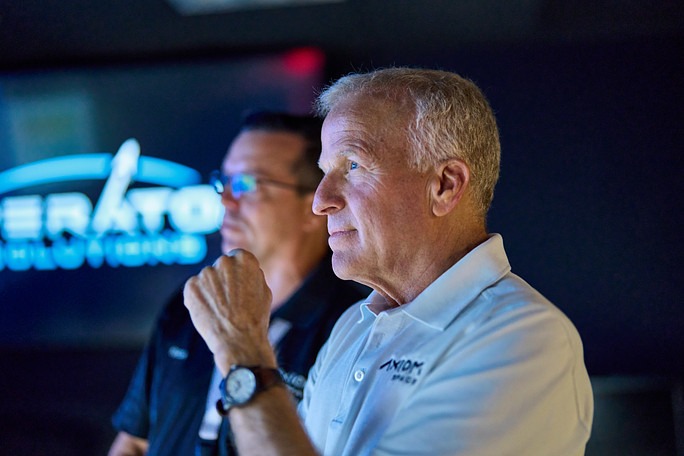
ST: Looking ahead, what are your future plans and goals in terms of promoting STEM education?
Shoffner: It is truly an exciting time for human spaceflight and education. Never in history have we had so much exciting material and career opportunities to direct our students towards. We also have a lot of new understanding of learning dynamics to what it takes to create a strong and active learner. Content such as that driven by STEAM education and using space as part of the curriculum conversation provides opportunities. Perseid Foundation has lots of plans to advance the STEAM curriculum in schools. We are also embarking on supporting schools in applying growth mindset practices to teachers and students in the classroom to build a strong learning culture. Beginning with the district administration and through to the student, the goals of the school must be aligned with the student in a common voice to build lifelong learners. This is how we win. This is how we reach the stars.
The Perseid Foundation, created by John Shoffner, is dedicated to improving education in underserved schools of Appalachia with programs for student growth and STEAM curriculum development. Find more info by visiting https://perseidfoundation.org/.



